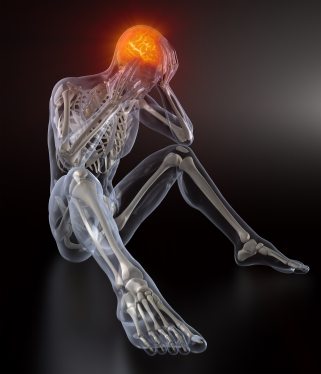
Cerebrospinal fluid (CSF) is a clear fluid that surrounds the brain and spinal cord. This fluid is continually produced and stored in ventricles, which are cavities of the brain. CSF cushions the brain, supplies the brain with nutrients, and removes wastes. Excess fluid drained from the brain is absorbed by other tissues.
Hydrocephalus is a condition in which there is an abundance of CSF in the ventricles due to interference in proper drainage and absorption. To accommodate the extra fluid, the ventricles enlarge causing compression of different parts of the brain.
Normal pressure hydrocephalus (NPH) is a type of hydrocephalus that occurs commonly in older adults. NPH is different from other types of hydrocephalus because it develops gradually. The slow enlargement of the ventricles causes the fluid pressure in the brain to not be as high as in other types of hydrocephalus. However, the enlarged ventricles still press on normal brain tissue.
NPH often presents with the following clinical triad of findings: urinary incontinence, gait disturbance, and dementia, with urinary symptoms appearing later in the sequence. Gait disturbance is often the initial and most prominent symptom of the triad. It may be progressive due to the expansion of the ventricular system. It generally presents as unsteadiness or impaired balance. Eventually, gait disturbances can lead to a need for canes or walkers. An increased tendency to fall backwards is also common. In the very late stages, the patient can progress to an inability to stand, sit, and rise from a chair.
Dementia presents as apathy, forgetfulness, and a dullness of thinking. Memory problems are often predominant, which can contribute to a misdiagnosis of Alzheimer’s disease. Although recall is severely impaired in NPH, recognition, a hallmark of Alzheimer’s, is either normal or slightly impaired.
Idiopathic NPH is normal pressure hydrocephalus occurring without a known cause; however, it can be attributed to any condition that blocks the flow of CSF such as bleeding from an abnormal blood vessel, an aneurysm, a closed head injury, meningitis or similar infections, and surgery on the skull.
The diagnosis of NPH is made by performing a lumbar puncture (spinal tap). If the initial pressure measurement is elevated, it points to a diagnosis of NPH. Clinical improvement after removal of CSF has a high predictive value for treatment success. A CT scan of the brain will show enlarged ventricles, and an MRI may show certain technical findings consistent with enlarged ventricles and elevated cerebral pressures. Imaging alone cannot differentiate between NPH and other dementia causing conditions such as Alzheimer’s disease, Atherosclerotic vascular disease, and Parkinson’s disease.
Treatment for NPH is surgical diversion of the excess CSF. A shunt is implanted to drain CSF from the intracranial ventricular system to a different location such as the peritoneal space in the abdomen. The most common shunts utilized today are called the ventriculoperitoneal (VP) and ventriculoatrial (VA) shunts. Placement of a shunt is a neurosurgical procedure performed under general anesthesia, and usually takes less than an hour to complete. Cognitive impairment associated with dementia has been reported to improve in more than fifty percent of cases. Successful treatment for NPH is available; therefore, it is medicaly negligent to misdiagnose NPH as Alzheimer’s dementia, where responses to the latest therapy innovations are only temporary.
